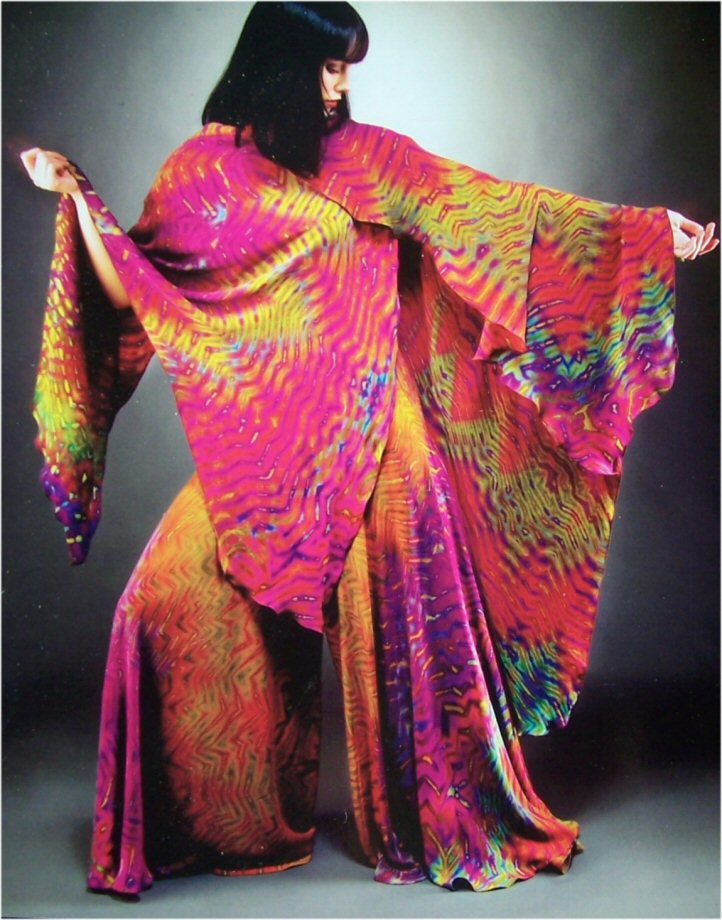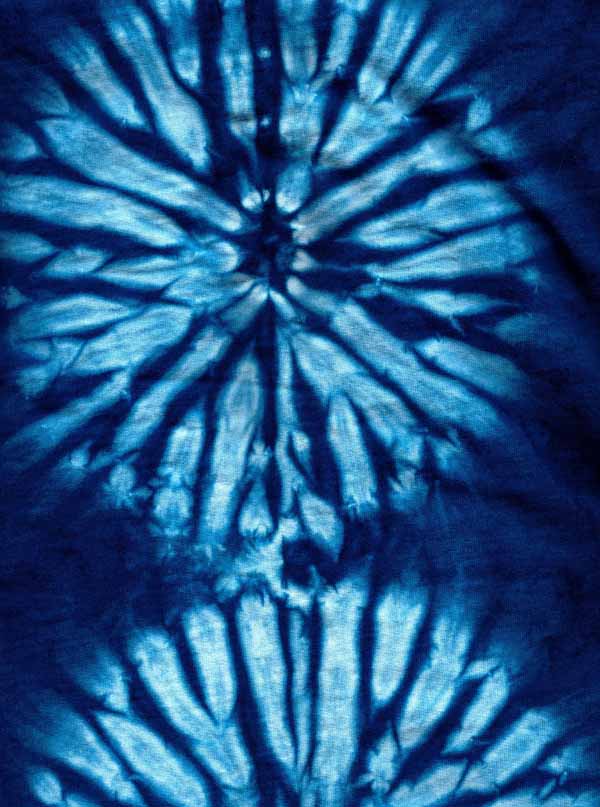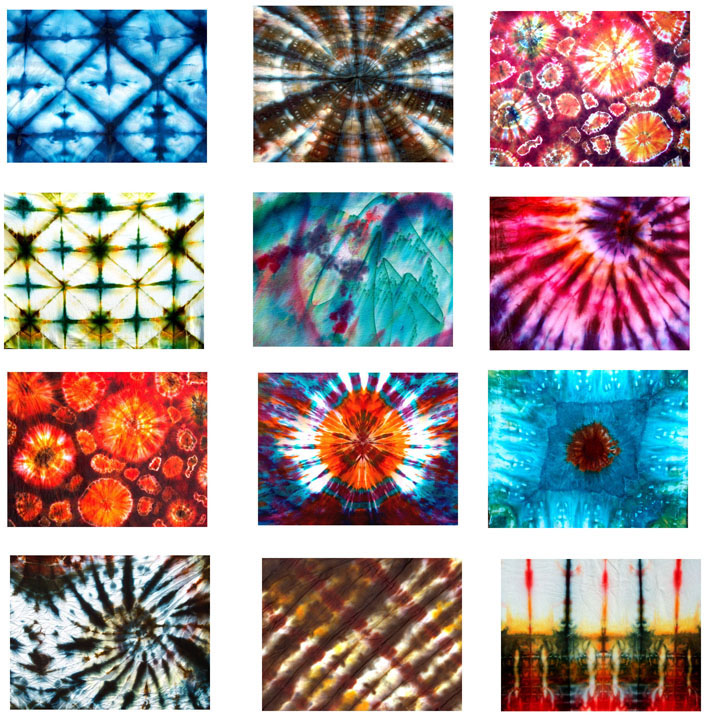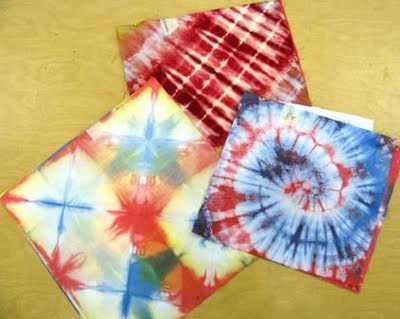
What equipment will I need?
It's essential to have all your equipment laid out before you start, so you don't end up dripping colored dye all over your kitchen. Dyeing is a messy business and you need to be prepared before you start. To this end, it's a good idea to mess-proof your working space. Use plenty of old newspaper on the floor and surrounding bench areas. Rubber gloves are essential, as is an old wooden spoon or two, which you'll be using to stir the dye mixture with.
You'll also need an old plastic jug, or a clean, empy ice-cream container in which to mix the initial dye concentrate. Just remember that each of these items will be stained the color of the dye when you've finished, so don't use your favourite wooden spoon, or a china serving bowl to mix the dye in. A plastic bucket is also handy, so that you can transfer the dripping fabric from the dye solution to the basin.
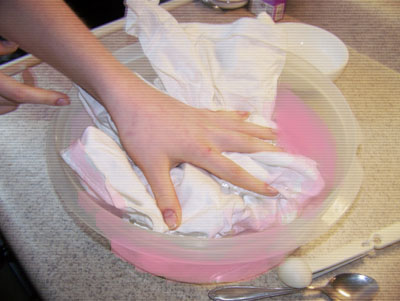
If you're using a hot-water dye, you'll need access to a stove to heat the dye mixture and a container large enough to move the item to be dyed around in while it sits on the stove. If you're using a cold-water dye, a large bucket or plastic washing tub is sufficient, as you will only need to leave the item immersed in the dye, rather than heating it through.
What's the difference between a hot-water dye and a cold-water dye?
The main difference lies in the intensity of color you can achieve. As its name suggests, a hot-water dye requires you to effectively simmer the item to be dyed on the stovetop in the dye solution. Depending on how large the item you're dyeing is, and how deep the color you're aiming for, you can leave the fabric in the dye solution for anything from 10 minutes to an hour and a half.
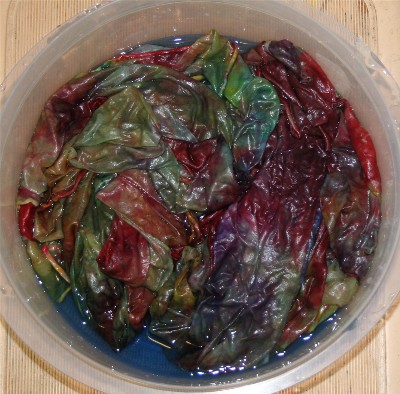
If you choose the hot-water method, it's a good idea to remove the wet item from the dye solution at the end of the process, and wait for the boiling water to cool before you empty it. It can be dangerous to move a large, ungainly pot of boiling water around your kitchen, so keep this safety aspect in mind.
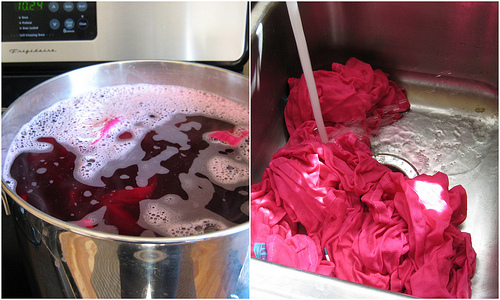
A cold-water dye process is less messy, and, as you don't need access to a stove, you can leave the article soaking on your balcony or in your laundry until the desired hue has been achieved. Cold-water dyes can create some pretty pastel and pale colors, but cannot imbue a really deep or dark color to fabric. If you're after this kind of effect, you will need to use a hot-water dye.
Both kinds of dyes need to be thoroughly mixed with water and a dye fixative before the article to be dyed is immersed in the solution. Pay close attention to the recommended fixative on the dye box, as different brands suggest different fixatives. Without a fixative in the solution, the newly dyed article will quickly fade and look washed-out.
What happens after I've immersed the article in the dye?
Once the item is submerged in the dye solution, use your wooden spoon to move it around gently, so that all its surfaces get a chance to absorb the color evenly. Leave it in the dye until it has achieved the desired shade, remembering to agitate the item from time to time so that the dye doesn't settle into the stationary folds of the material.
When judging the depth of color, remember that fabric is slightly darker when wet, so take that into account when deciding if the item is ready to remove.
When you're satisfied that the item is the right shade, lift it carefully out of the dye solution with your wooden spoon and drop it straight into the waiting bucket. Rinse it thoroughly in cold running water until the water runs clear, and hang it up to dry. In future, make sure that you hand-wash the item separately, as home-dyed items are never completely color-fast.
What kind of material can you dye?
Commercial dyes are most effective on natural fabrics. 100% cotton is the best candidate, as it takes color evenly and predictably. However, you can also dye cotton blends and wool, but be very careful to read the manufacturer's instructions, as some fabric should not be subjected to extreme heat. The paler the original color of the fabric, the better the result and the truer the final color.
Never try to dye patterned or stained fabric. The original color of the fabric can really affect the final color of the dyed article, and it is often possible to see the original floral or plaid print through the new color. Stains, too, always show up in the final result. Because the stained section of the fabric starts out a different color from the rest of the item, it ends up a different color too.
